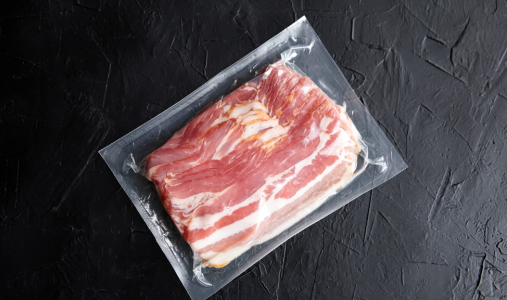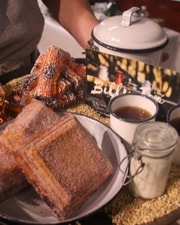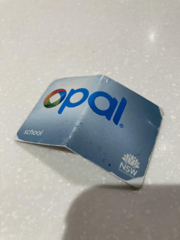Uncover surprising reason behind brown discolouration in Coles meat packets!
By
Gian T
- Replies 2
When selecting the perfect cut of meat, our eyes are often the first judges, leading us to make snap decisions based on colour and appearance.
This was precisely the case for a Coles shopper who found themselves in a meaty predicament, puzzled by the stark contrast between two identical packets of rump medallions.
One boasted a vibrant red hue, while the other was tinged with a less enticing pinkish-brown.
Instinctively, the shopper reached for the brighter package but later questioned the wisdom behind this automatic choice.
Many of us are familiar with this scenario, especially those who take pride in selecting the freshest meal ingredients.
The allure of a bright red steak is hard to resist, as it's often associated with freshness and quality.
But is this assumption accurate? Does a darker colour indicate a compromise in quality or freshness?
These questions perplexed the shoppers and started a debate among their colleagues, who unanimously favoured the redder meat based on its appearance.
To unravel this culinary conundrum, we turned to Liam Crawley, a butcher, chef, and Managing Director of DWL Hospitality, who shared his expert knowledge.
‘When you go to the supermarket and browse the meat display, you can sometimes notice that the meat is a different colour.’ he explained.
‘Many consumers assume that this means that the meat is old or not as fresh as its brighter counterparts, but that is simply not the case,
Crawley said that the colour variation in meat, particularly when vacuum sealed as is common in supermarkets, is not an indicator of age or freshness.
Vacuum sealing is a method for extending the shelf life of meat by removing air, which prevents rapid spoilage.
This process, known as wet aging, can sometimes cause the meat to lose its bright red colour due to the lack of oxygen exposure.
‘As an example, if you had two steaks and had one vacuum sealed and the other kept on a plate uncovered in the fridge, the sealed steak might lose some of its colour as it isn’t exposed to any air,’ he said.
‘Whereas the steak on the plate will maintain its bright red colour,’
‘A more classic example of this is when you go to your local butcher shop,’
‘The steaks sliced in the display will be beautiful and red to look at, but the underside turns a dark shade of brown as it hasn’t been exposed to any oxygen.’
‘Another reason meat becomes discoloured is because of a protein called myoglobin.’
‘It’s purplish in colour, and when it is mixed with oxygen, it becomes oxymyoglobin and produces a bright red colour.’
'As livestock ages, their meat is often a deeper colour. This is because their myoglobin levels increase with age.’
To test this theory, Crawley suggested an experiment for the curious shopper: Next time at Coles or your local butcher, choose a darker piece of meat.
Once home, place it on a plate in the fridge, uncovered.
As it is exposed to air, the colour will brighten, and when cooked, it should taste just as succulent as the meat that initially caught your eye.
So, the conclusion is that both are safe to eat and should have a similar taste!
In other news, a mother was astonished to discover discoloured beef mince that was still within its expiration date.
The item in question was '500g Five Star Jindurra Station Beef Mince' from ALDI, which has since generated a conversation on social media. For more details, click here.
 Have you ever chosen meat based on its colour? Will this information change how you select your cuts in the future? Let's discuss this in the comments below.
Have you ever chosen meat based on its colour? Will this information change how you select your cuts in the future? Let's discuss this in the comments below.
This was precisely the case for a Coles shopper who found themselves in a meaty predicament, puzzled by the stark contrast between two identical packets of rump medallions.
One boasted a vibrant red hue, while the other was tinged with a less enticing pinkish-brown.
Instinctively, the shopper reached for the brighter package but later questioned the wisdom behind this automatic choice.
Many of us are familiar with this scenario, especially those who take pride in selecting the freshest meal ingredients.
The allure of a bright red steak is hard to resist, as it's often associated with freshness and quality.
But is this assumption accurate? Does a darker colour indicate a compromise in quality or freshness?
These questions perplexed the shoppers and started a debate among their colleagues, who unanimously favoured the redder meat based on its appearance.
To unravel this culinary conundrum, we turned to Liam Crawley, a butcher, chef, and Managing Director of DWL Hospitality, who shared his expert knowledge.
‘When you go to the supermarket and browse the meat display, you can sometimes notice that the meat is a different colour.’ he explained.
‘Many consumers assume that this means that the meat is old or not as fresh as its brighter counterparts, but that is simply not the case,
Crawley said that the colour variation in meat, particularly when vacuum sealed as is common in supermarkets, is not an indicator of age or freshness.
Vacuum sealing is a method for extending the shelf life of meat by removing air, which prevents rapid spoilage.
This process, known as wet aging, can sometimes cause the meat to lose its bright red colour due to the lack of oxygen exposure.
‘As an example, if you had two steaks and had one vacuum sealed and the other kept on a plate uncovered in the fridge, the sealed steak might lose some of its colour as it isn’t exposed to any air,’ he said.
‘Whereas the steak on the plate will maintain its bright red colour,’
‘A more classic example of this is when you go to your local butcher shop,’
‘The steaks sliced in the display will be beautiful and red to look at, but the underside turns a dark shade of brown as it hasn’t been exposed to any oxygen.’
‘Another reason meat becomes discoloured is because of a protein called myoglobin.’
‘It’s purplish in colour, and when it is mixed with oxygen, it becomes oxymyoglobin and produces a bright red colour.’
'As livestock ages, their meat is often a deeper colour. This is because their myoglobin levels increase with age.’
To test this theory, Crawley suggested an experiment for the curious shopper: Next time at Coles or your local butcher, choose a darker piece of meat.
Once home, place it on a plate in the fridge, uncovered.
As it is exposed to air, the colour will brighten, and when cooked, it should taste just as succulent as the meat that initially caught your eye.
So, the conclusion is that both are safe to eat and should have a similar taste!
In other news, a mother was astonished to discover discoloured beef mince that was still within its expiration date.
The item in question was '500g Five Star Jindurra Station Beef Mince' from ALDI, which has since generated a conversation on social media. For more details, click here.
Key Takeaways
- A Coles shopper noticed a difference in colour between two identical packs of rump medallions, choosing the brighter red meat over the brownish one.
- People often judge the freshness and quality of meat by its colour, opting for a brighter red appearance.
- An expert explained that vacuum sealing removes air, which can cause the meat to lose its bright red colour, but this does not mean the meat is any less fresh or safe to eat.
- Meat's colour can change based on exposure to oxygen, and even darker meat will become brighter red once exposed to air again, without affecting its taste or quality.








